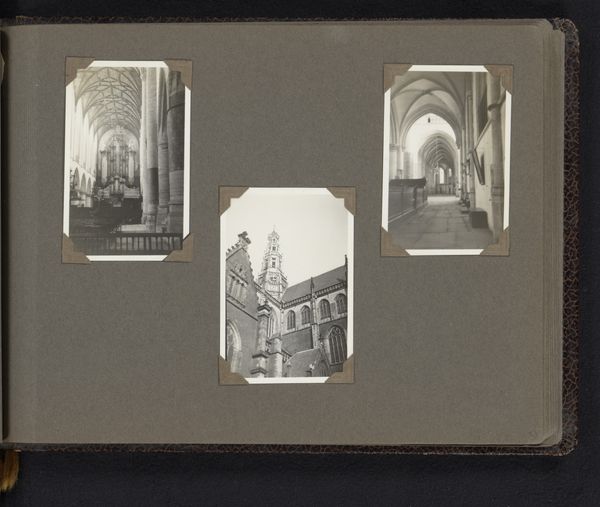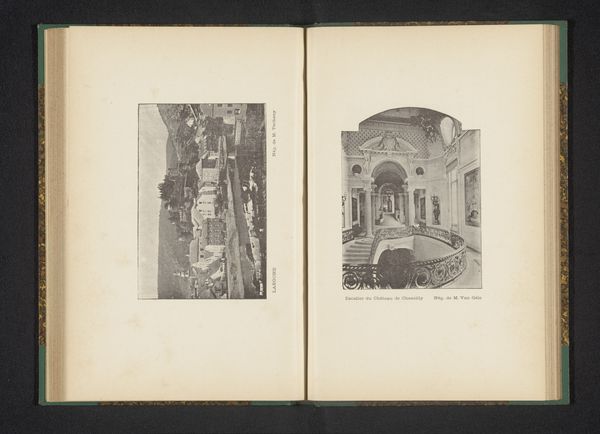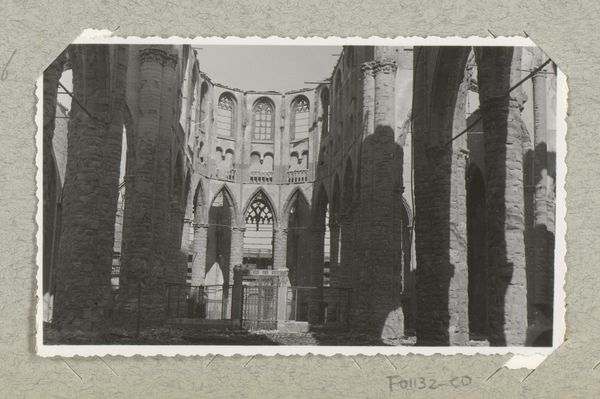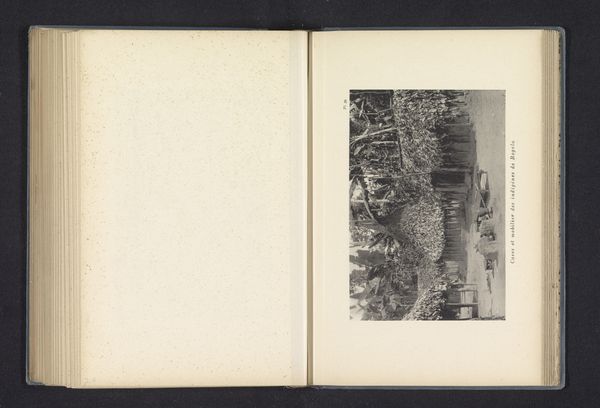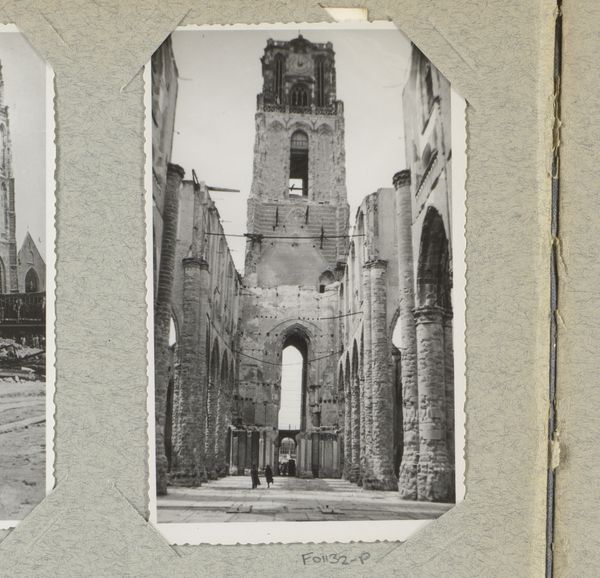
photography, gelatin-silver-print, architecture
#
landscape
#
photography
#
gelatin-silver-print
#
architecture
#
realism
Dimensions: height 136 mm, width 88 mm
Copyright: Rijks Museum: Open Domain
Curator: This evocative gelatin-silver print, titled "Ruïne van de Laurenskerk te Rotterdam," was created by J. Nolte sometime between 1940 and 1945. Editor: Immediately striking. The play of light and shadow creates this incredibly somber mood, doesn't it? The strong vertical lines of the pillars, rhythmically receding, guide the eye into what remains of this space, a space gutted. Curator: Absolutely. Nolte’s photograph is a potent visual document of the devastation inflicted upon Rotterdam during World War II. The Laurenskerk, a significant medieval church, became a symbol of the city's suffering and resilience. This image captures more than architectural ruin; it’s about a disrupted social landscape, transformed identity and, perhaps, renewed possibility. Editor: What's truly masterful is the framing and contrast. See how the geometric forms of the arches meet the raw, almost brutal texture of the broken stone? The interplay communicates the formal architectural design juxtaposed against wartime realities. I think there is meaning embedded in that design as well. Curator: Precisely, that clash of form and texture speaks volumes about the period’s ideological conflicts. Realism is on full display with documentary power; images like these held significant cultural weight, influencing reconstruction efforts and public memory. How to move forward weighed on minds. Editor: Do you feel like this image's composition uses some sort of semiotic language? Perhaps the ruins signify the decay, but also suggest potential for rebuilding, both in literal and more abstract, conceptual forms. Curator: Undeniably, the ruin isn’t just a void, but also a space pregnant with possibility. Public sentiment shapes cultural objects; as a country works through disaster, an object such as this helps guide sentiment. Editor: Seeing the structure's skeleton laid bare creates a deep connection with what endures but also all that has been stripped away. It offers such a severe, beautiful, heartbreaking visual experience. Curator: And considering the role that these photographic images played, informing post-war social policy and planning, offers insight into its function exceeding aesthetic appeal. Editor: This has been thought provoking. Highlighting not only physical and visual structures but also the social contexts, offers more nuanced layers than initially presumed.
Comments
No comments
Be the first to comment and join the conversation on the ultimate creative platform.
